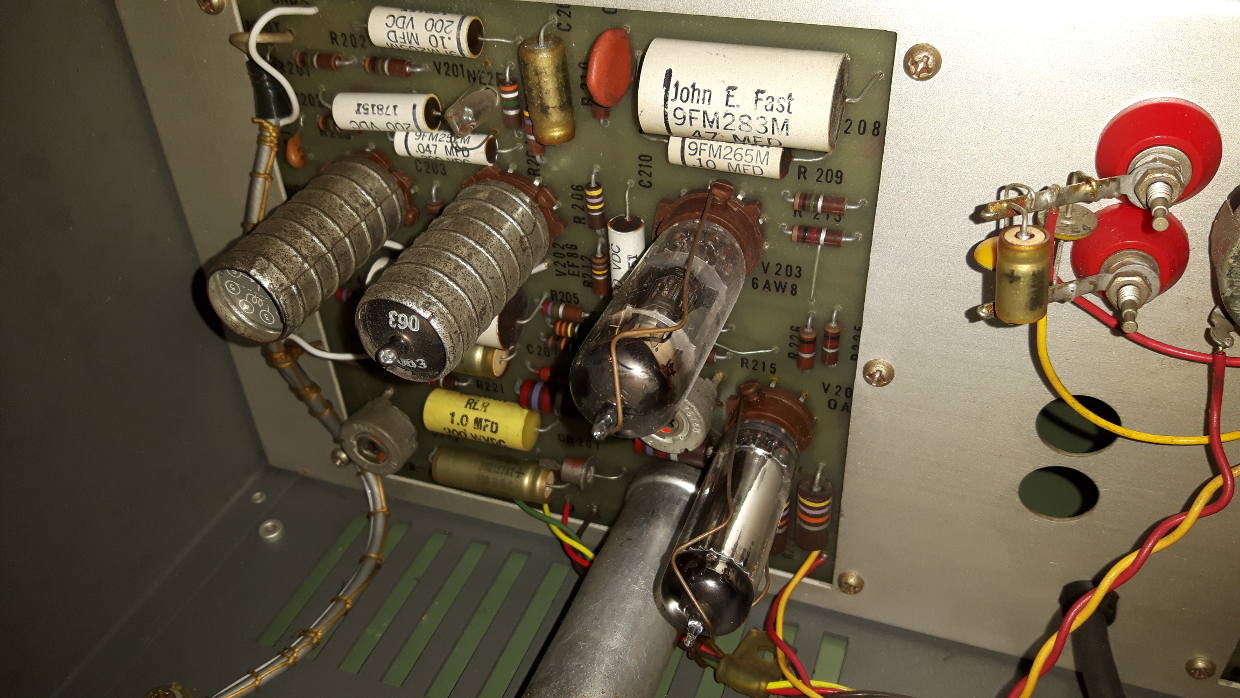John Fluke Mfg. Co. Inc. proudly presents
I recently got a shipment of 3 devices considered dead for a price slightly over shipment costs. This one is very close to working condition, but acts up when it runs for a while. Anyway, time for some pretty photos with lots of resistors!
It's a differential DC voltmeter with VTVM-mode up to 500V and 5 decades., the Interwebs unfortunately are devoid of documentation. Its employing both vacuum tubes and solid state components, its appearance and the low serial number let me believe its from the sixties.
After a slow, soft start with a variac it came to life immediately without bigger problems and with a whirring sound . Both differential and VTVM modes basically work. However, it has two problems:
- Temperature drift: Its quite accurate after turn on but then drifts away.
- The wheel with the printed digits attached to the 4th decade switch has changed shape, needs some force to turn
No realy troubleshooting has been done yet.
Enough talk, here are the pictures:
Left front panel with center-zero instrument

The instrument is pretty big and still white, the crud you see was on the glass.
Turning the "operate/calibrate" switch to the right, you can actually adjust the needle to zero. This is possible when cold, later the rightmost adjustment position is to the left of the zero. There are two stacked potentiometers with a mechanical dead-band for the adjustment!
Right front panel with the decade switches

Also, polarity switches, mode/range selectors and input connectors are here.
Top view with cover removed

Transformer connection board. At the rear cover is a sticker which tells you how to connect for 0.115 or 0.23 kV mains.

Left side PCB: Some tubes, one of them a voltage stabilizer (0A2) and a vibrating relay. Either chopper-amp or vibrator.

Right side PCB: Tube-solid state mix


The resistor strings that belong to the decade switches to select voltage division ratio

Those are made by Fluke (at that age maybe John Fluke himself), wirewound on (mica?) plates and laque-covered

Those are made by Daven.
